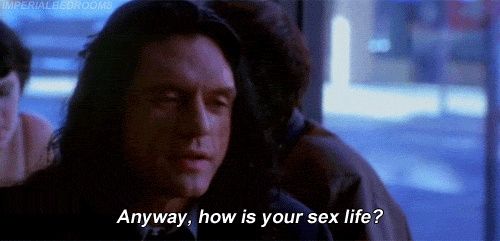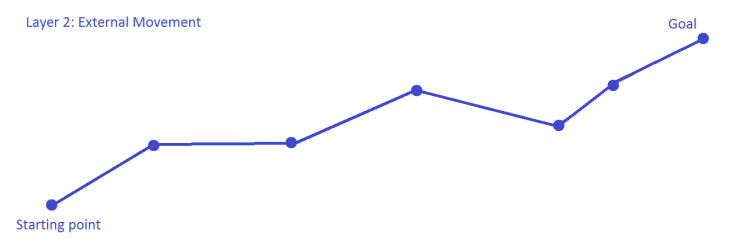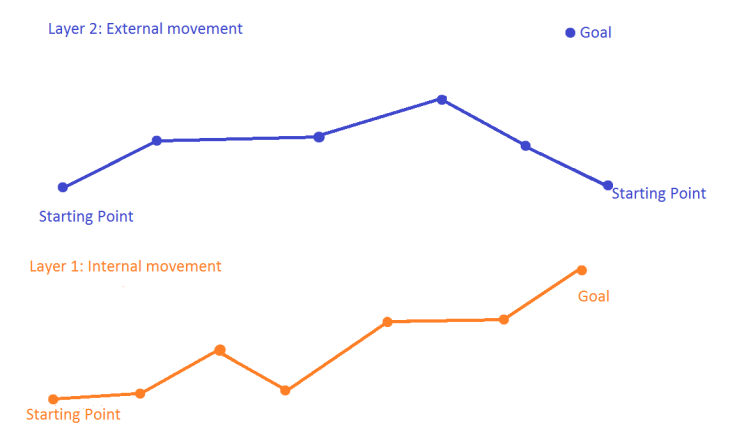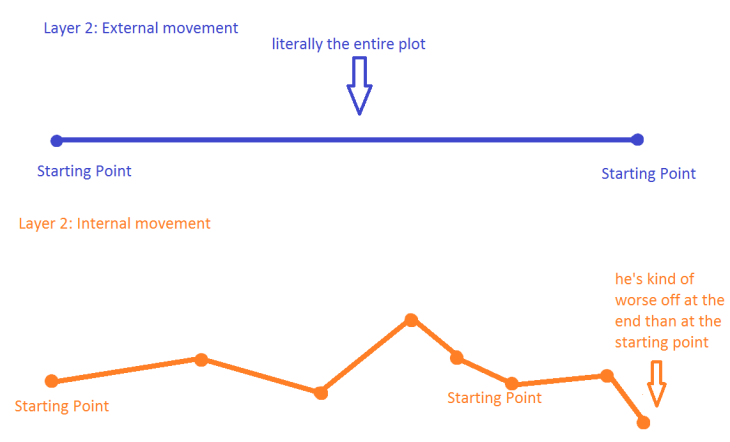I had this friend that I was frightened of up until I grew as a person (started meditating). The reason she scared me and why I needed growth (meditation) to connect with her was the intense approach she had to socialization. You see, that friend, let’s call her Madeline, never liked small talk. The ramification of this was the absolute lack of conversational foreplay and an immediate cut to the How’s your sex life part of the tête-à-tête. But now, I like to think I understand her. She never really wanted to know what was happening to me or what I was doing, but what kind of person I was at the given time. She wasn’t interested in the surface of goings-on in my life, which usually make up the small talk, but in the mechanisms behind the scenes that create that surface. It was Madeline (and meditation) that made me look at the deeper layer of the plot and, as a result, inspect the anatomy of a good book ending.

Layer 2: Externals of a Book Ending
I see a problem when I google for the book ending advice. It’s not so much that it’s wrong, but that it gives only half the story, the surface of the journey. When people tell you that you should avoid Deus ex machina or that a plot twist might be a good idea, they’re talking about the Layer 2 of the story.
Imagine a tale about a mother, named Dorothy, trying to bring her son, David, a lunch box which he forgot to take to school. The whole plot is about the mishaps and obstacles she faces in this endeavor. The taxi won’t pick her up, she loses the box, she stops to buy something else to bring him etc. In the end, she manages to meet David and give him the lunch, therefore reaching the external objective of the plot. Here’s a…graph (?) illustrating what her journey might look like:

(I made it in paint because I’m inbred)
This is all well and good, but it doesn’t tell Dorothy’s full story. Jumping straight to the second layer is problematic because the second layer stems from the first one. It is completely based on it. And when we work our way around this foundation we end up with a structure that might crumble. This story is not about an eventful day of a mother, not really. No story is about events, every story is about people and what drove them to those events. And this is what we get to know from the first layer, the one no-one ever talks about.
Layer 1: The Anatomy of a Good Book Ending
Layer one of the story is the depth that makes the atmosphere, the sentiment, every decision, every bit of body language. It’s the threads and the fabric that make the universe, it’s the heartbeat and the engine and the mechanism under the skin. Everything but the first layer is just polishing the surface that stemmed from it. Unlike external plot, this dimension of the story is obligatory. This is where the character arc comes full circle. This part has to be dynamic otherwise the story didn’t need to be told. When you’ve got layer one down, when you’ve got the engines running smoothly the book writes itself. When the foundation is solid the surface falls into place.
Imagine Dorothy never reaches her son to give him lunch. She sets off on her journey but has a few encounters that make note on how David is seventeen and he can take care of himself and his mother coming to school to bring him lunch won’t look good. So she goes home while her morning tea is still hot, returning to the starting point of the plot and the story ends. In this example the external goal of the plot was not reached but the character arc went full circle.

(This ‘graph’ is an example of a custom DIY content you won’t get anywhere else. Fortunately.)
Necessity of External Movement
The thing that bugs me the most when seeing all the advice focusing on the second layer is that you don’t even need a second layer. Look at this completely accurate and well-put together graph on the internal and external movement of Kafka’s Metamorphosis:

Okay, maybe I wasn’t fair, I should have put a little fall for when he goes from laying in bed to falling off the bed, that’s technically a movement. But you get what I’m saying. And no, the internal layer is not an accurate display of his emotional journey, this is just for description’s sake. The point is, external movement is virtually non-existent. And this is the downfall of all the advice focusing on the second layer of the plot: Everyone is giving tips on how to structure a good ending by telling you to do something that is completely optional.
I say, don’t look at your story in plot points and twists, look at it in layers. There isn’t really a characterization or a plot segment of the novel-crafting – they’re the exact same thing. Characterization is the plot, just a different layer of it. Before the final full stop, don’t ask yourself where should your character end up. Ask what has your character become. Don’t ask yourself whether you should include a Deus ex machina or have the protagonist save the day, ask how their sex life is doing instead. And that just might answer your question.